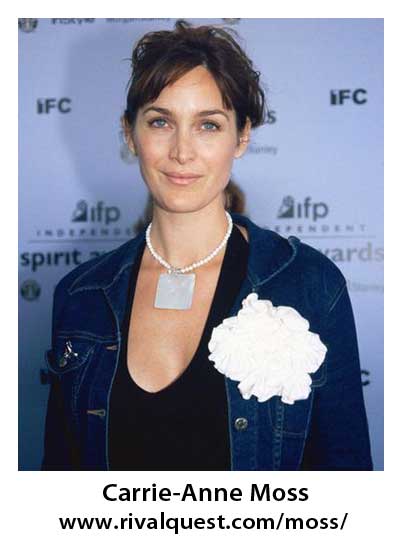The reason Adam and Eve felt the need to cover themselves after the Fall had to do with what was going on in their minds; the problem was not human nakedness, nor sexuality. The problem with the display of sexuality in film likewise has to do with the mind. Nudity in a film is wrong when it displays a corrupt mind with a corrupt purpose.
After all, filmmakers and performers may just have “dirty” minds and so make “dirty” films designed to appeal to other “dirty-minded” people, or designed to corrupt innocent-minded people into accepting or becoming “dirty-minded” people. And, I’m not sure we can document this by appealing to how many times a breast is revealed, or how much heavy-breathing steams the camera lens. I am dead sure that no Hollywood or government-regulated rating system has been able to get at this.
Take two examples.

First, the dreadful first sequel to The Matrix which featured Keanu Reaves and Carrie-Anne Moss making love in some egg-shaped cave while a large group of revelers dance to a primitive beat outside. As a follow-up to a film about the discovery of the messianic “One,” who comes to redeem his imprisoned people, this scene in this film was about as base as any “one” can get. “Ah, so my suspicions were true! The Matrix was not about some spiritual quest to save humankind – it was really about how “hot” Keanu Reaves and Carrie-Anne Moss look in black leather.” Yes, indeed, that is what that one scene made abundantly clear. It kyboshed the whole venture; it pulled the curtain aside and showed how little was going on in the head of the great Oz. The problem, of course, is that relatively little flesh was shown in that silly “egg” relative to the stink coming from the mental dirt at Warner Brothers.
Second, take one of the best religious films ever made, Bruce Beresford’s Black Robe (1991). Beresford adapts the film from a Brian Moore novel documenting the spiritual struggles of a genuine saint, the 17th-century Jesuit missionary to Canadian Indians, Noel Chabanel. Three times in the film, the heroic priest, “the black robe,” is tempted by the sexual act. Once, it is at night across a smoky tent, an encounter he watches between the chief and his wife, then its his glimpse of lovemaking between a fallen novice and the chief’s daughter, then its when the daughter drops her wrap to seduce a guard to allow the rescue of her friends. Each incident is absolutely necessary to convey both plot and theme. Each is handled with visual discretion. All together, the three scenes become part of the priest’s pilgrimage toward holiness, his eventual embrace of the Indian people, as they are, and his offer of love and baptism to them.
No rule or regulation can discriminate between the display of sexuality in those two films. If rules would be applied, Black Robe would undoubtedly be censored ahead of Matrix Reloaded.
Thus the problem. All regulation can do is highlight the display of sexuality in a film. After that, we need such old-fashioned ideas as discretion, prudence, sensibility, and taste to carry us to the higher ground.
